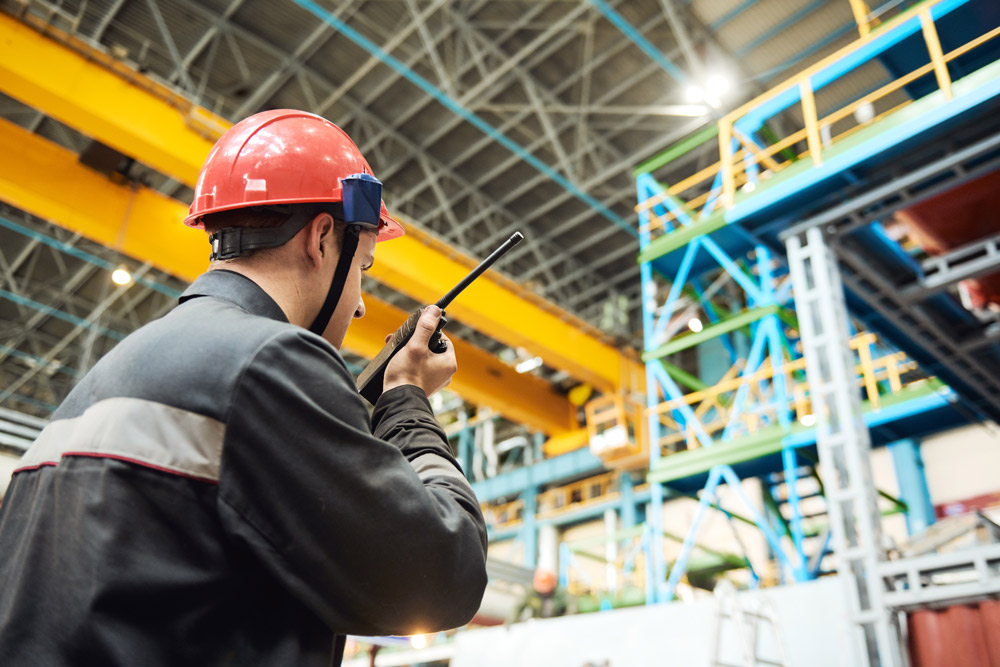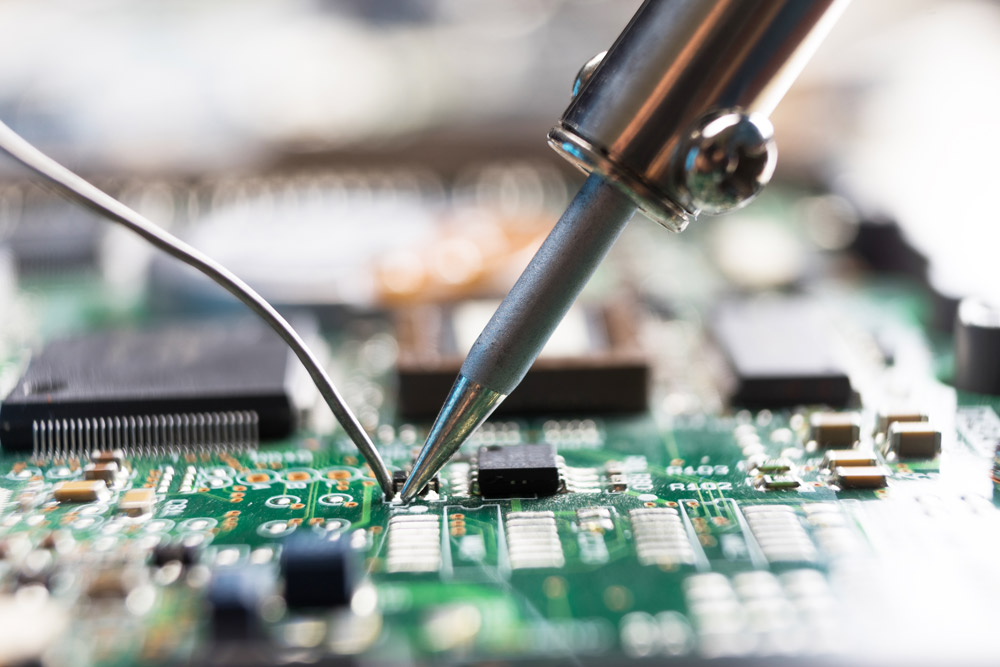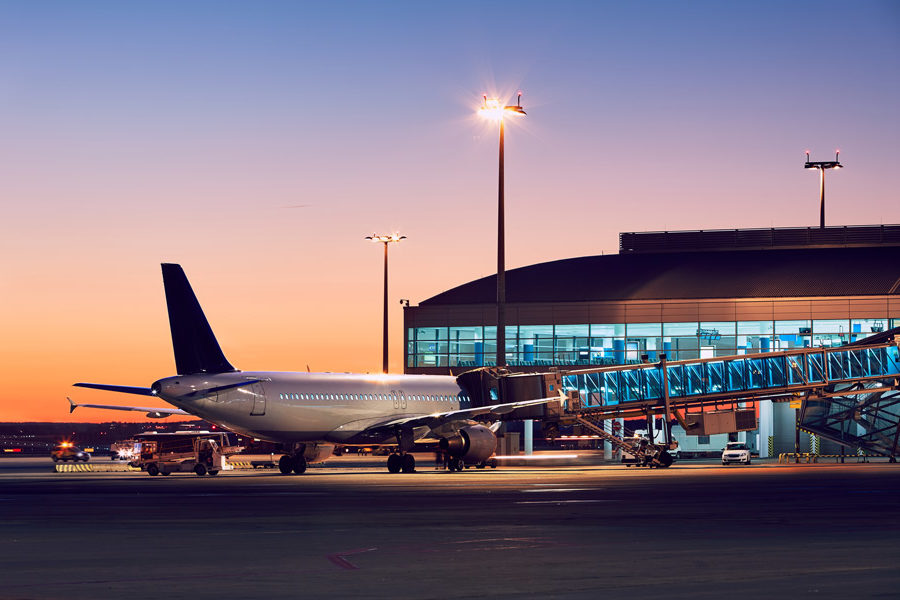BESCom – Your partner for modern indoor radio
Putting a reliable and modern indoor radio system into operation is an extensive task that requires expertise. From the initial considerations before starting the project to the final commissioning, we are here to provide engineers and consultancy firms, building owners, operators and contractors with advice and support. We will also take care of the entire 9-stage notification procedure and provide assistance in any dealings with the authorities.
BESCom takes responsibility for the planning, installation, inspection and approval, as well as servicing and maintenance, of indoor radio systems.
Indoor radio systems from BESCom: professional planning, installation and commissioning for reliable operation in the event of an emergency.
We will also ensure you are fully compliant with the official regulations for securing indoor radio coverage.
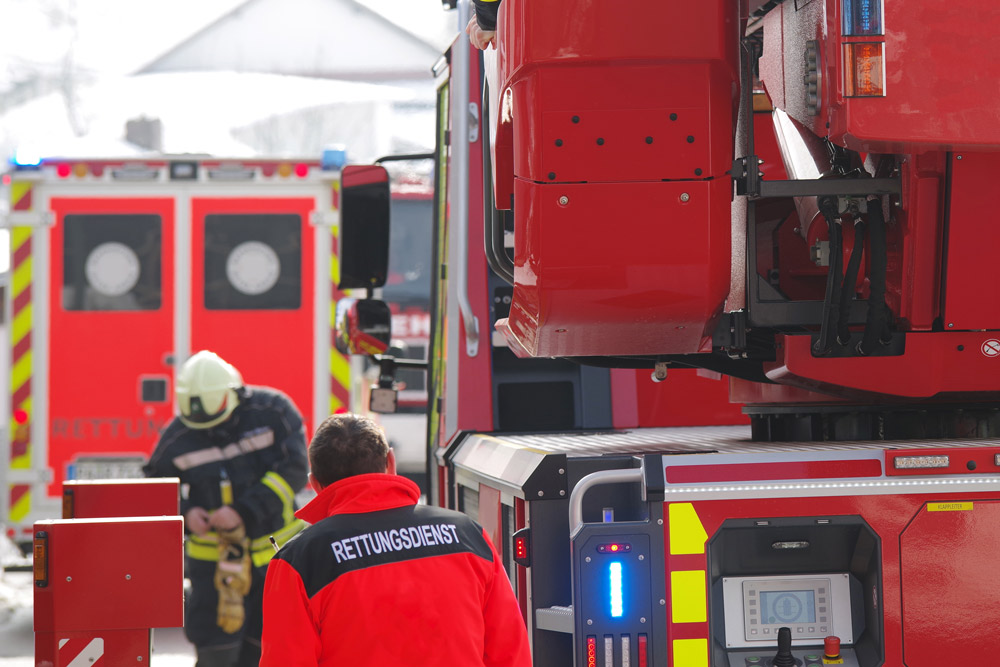
BOS digital radio –
A challenge within buildings
BOS digital radio is available across Germany, nationwide coverage that provides digital radio as an option in many buildings. Although depending on how they have been designed, whether with metal façade elements or metallised glazing, BOS digital radio reception in some of the more modern buildings is less than satisfactory.


The solution: an indoor radio system
With smaller buildings, a passive radio signal can suffice. However, larger buildings that are not receiving adequate coverage require what is often an extremely complex indoor radio system. The indoor radio system distributes the digital radio signal across the entire indoor area of a building. Should this prove insufficient, a separate base station may be required in exceptional cases.
The provision of full radio coverage within buildings is a safety-critical requirement of the fire service.
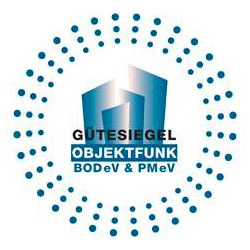
BESCom – Quality indoor radio coverage
BESCom has been certified by the German Association for Professional Mobile Radio (PMeV) and the German Association for Indoor Radio Coverage (BODev) for the planning and installation of indoor radio systems. BESCom has been awarded the seal of approval for indoor radio coverage in the following categories:
- Planning
- Installation
- Service
- Maintenance
The importance of indoor radio coverage
Indoor radio coverage saves lives! Modern buildings are often insufficiently equipped for digital radio. In the event of a fire or catastrophic event, imagine complex locations with the very many people who would be affected. Ensuring the rescue services can reliably communicate via digital radio is essential here for saving lives.
A functioning indoor radio system enables rescue services to reliably communicate within the building. The installation of an indoor radio system makes it considerably easier to coordinate rescue efforts and helps to protect and save lives.
Official testing of network coverage within buildings
BESCom carries out the measurements required by the fire service responsible for verification of radio coverage within the building. On the basis of this data, the fire service defines the requirements to be met by the indoor radio system.
Non-compliance with these conditions has far-reaching consequences for the operators, owners and contractors.
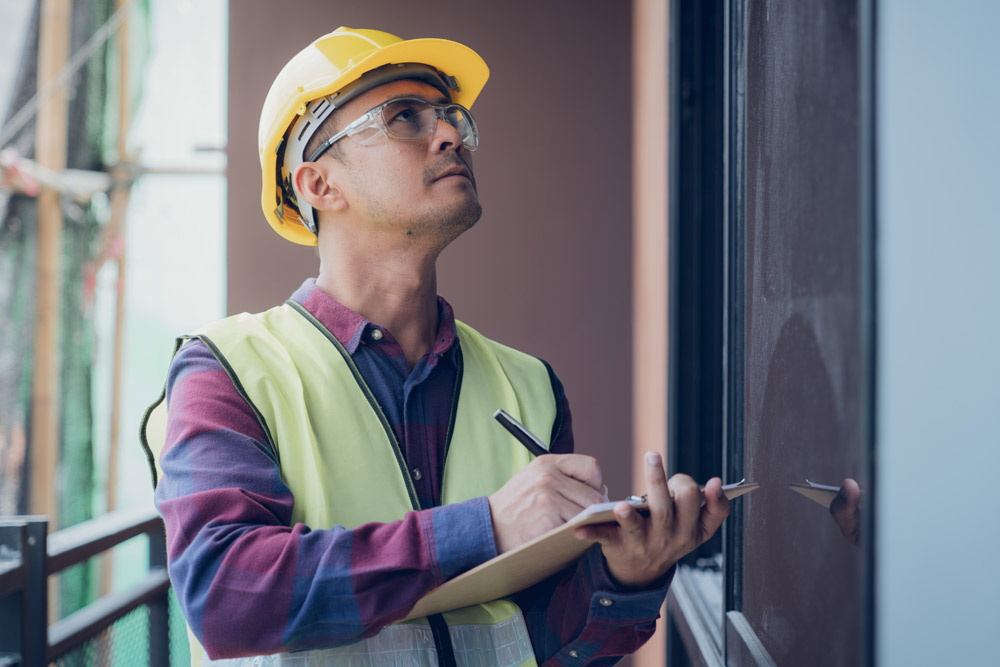
Consequences of insufficient indoor radio coverage
- Delay or cancellation of planned openings, e.g. shopping centres
- Additional costs incurred in effort to meet requirements
- Lack of expertise jeopardises the radio coverage and, in serious cases, endangers lives
Who is responsible for organising the indoor radio coverage?
Indoor radio coverage must be guaranteed by operators of many modern buildings. Essentially all facilities in which potentially very many people may be affected or those which are poorly accessible or complex to navigate by the rescue services.
This includes, in particular ...
- Airports and train stations
- Road and rail tunnels
- Tunnel networks (public transport)
- Industrial facilities
- Sports facilities and places of assembly
- Offices/commercial buildings
- Multi-storey/underground car parks
- Shopping centres
- Hospitals
- Hotels
- Prisons
- Theatres

Indoor radio coverage
The installation and commissioning of an indoor radio system requires expertise and careful planning.
- Implementation of official requirements saves lives.
- An indoor radio solution that has been individually planned and implemented is indispensable in order to be able to take local conditions into consideration in the event of an emergency.
Indoor radio coverage
Indoor radio systems play an important part in saving lives and keeping rescue teams safe.

The opening of a shopping centre
Owners and operators are faced with many challenges when it comes to keeping a shopping centre safe. As there are generally a lot of people to be found inside the building, the potential risk for customers in the event of an emergency is very high. For this reason, comprehensive testing is carried out to check the digital BOS radio coverage. Should this prove insufficient, extensive conditions will need to be met before any radio system can be installed.
Delays increase costs
If conditions are not reliably met, no operating licence will be granted. This leads to delays and thus an increase in costs for the operator and/or owner.
Indispensable in dangerous situations
An indoor radio system is indispensable when it comes to optimally coordinating rescue services in emergency situations, i.e. such as a fire.
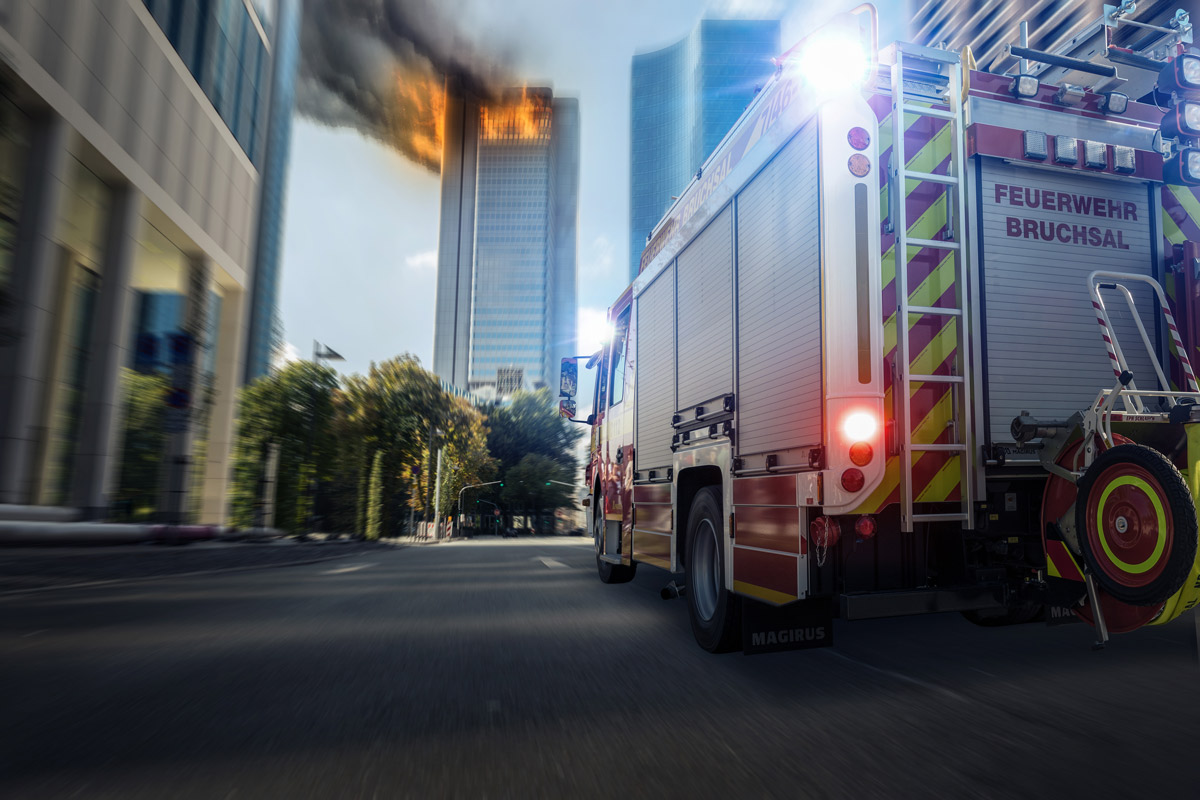
Fire service in operation
What happens if a fire breaks out at a shopping centre? Once the fire brigade arrives on the scene, they activate the indoor radio coverage via the fire brigade control panel. Contact between the head of operations and the firefighters inside the building is necessary for the efficient coordination of firefighting efforts. An antenna and repeater system installed as part of the indoor radio system makes this communication possible across the entire building.
Coordination of rescue services
An efficient indoor radio system facilitates the coordination of rescue teams.
Signalling dangerous situations
Dangerous situations are signalled faster thanks to improved coordination of the rescue services.
Saving lives
Indoor radio coverage saves lives in the event of an emergency thanks to the better coordination of the rescue services.
Legal framework for indoor radio coverage

Legal framework
Depending on the building in question and the applicable legislation, it is the operators, contractors or even building owners who are responsible for the installation and proper operation of indoor radio systems. New buildings must be planned in accordance with the respective state building legislation and equipped with digital radio technology.
You may be obligated to install or retrofit an indoor radio system in line with a building permit process or due to other public regulations. The requirements to be met by an indoor radio system are defined according to various criteria, for example what it will be used for, as well as the capacities and coverage required. The indoor radio solution that complies with the requirements is then selected.
Inspection and approval of indoor radio systems
Germany’s Federal Agency for Public Safety Digital Radio (BDBOS) is responsible for the final approval of an installed indoor radio system, as well as for the commissioning and connection of the respective system to the network. As frequency owner and operator of the BOS digital radio network, it is also responsible for the smooth running of the network on behalf of the Federal Network Agency.
The approval process of the BDBOS comprises a total of nine steps, which must be completed before a new indoor radio system may be installed and operated.

Step 1: Planning the network connection
The notification process begins with the submission of the corresponding form to the fire prevention authorities. There are also a number of other documents which must be submitted here.
These include, in particular:
- A description of the building, including photographs
- A list of all contacts
- Coverage measurements (all best servers) without indoor radio coverage
- Coverage measurements (all possible connection cells) without indoor radio coverage
- Building environment measurement without indoor radio system
- Panoramic measurement
- Link budget
- Map of surrounding area
- Block diagram
- Redundancy concept
- Classified instruction from professional planner/installer
- Calculation of time plan
- Free-field transitions
Step 2: Inspection by BDBOS
This stage of the notification process verifies the necessity of the indoor radio system and the relevant authority sets out any other technical requirements that the system must meet.
Step 3: Specifications set out by regional office responsible
The authority responsible provides information regarding the free-field connection and the frequencies that need to be programmed are specified. Further specifications for the planner and installer of the system may be set out here.
Step 4: Connection information
Information regarding the connection must be entered here by the specialist planner. This information is based on the finished connection plans drawn up by the planner. At this point, the signed contract for management of the network connection will have been sent to BDBOS. A copy must also be sent to the regional office responsible.
Step 5: Permission for use of frequency
Once approval has been granted to use the frequency, BDBOS forwards the number of this official notification via the regional office to the respective planner or installer.
Step 6: Final detailed plans
After forwarding the official frequency notification, the indoor radio system may be temporarily put into operation for up to 6 hours following advance written notification. At this stage of the process, the final approval is prepared by the regional office responsible, who will need to receive all the necessary final documentation.
This includes:
- In-house coverage measurement with indoor radio coverage systems
- Building environment measurement with measurement of cell change to the indoor radio system
- Annex 2 for network connection management agreement
- Spectrum and network analysis according to BDBOS requirement
- Photos of the utility room and system components
- Directions on how to get to utility room
- Calculation for de-sensitisation of connecting base station (noise calculation)
- Floor plan of building that includes utility room, system components, cable runs, antennas, fire brigade control panel
- Configuration of the active components
- Cabinet plans and circuit diagrams for systems used
- Overview of the coupling networks
- Data sheets for the system components
- EMC – Declaration of Conformity
Step 7: Operational acceptance of the radio system
Once all planning documents have been submitted in full to the regional office responsible, an appointment can be made with this office for approval of the radio system. Operational acceptance testing of the system is also carried out and documented by the relevant BOS authority.
Step 8: Commissioning approved by the regional office responsible
Approval for commissioning of the system is issued by the regional office responsible on the basis of the documents received.
Step 9: Approval granted by BDBOS
Once successfully approved by BDBOS, the installer of the radio system receives the authorisation to operate from the regional office responsible.


